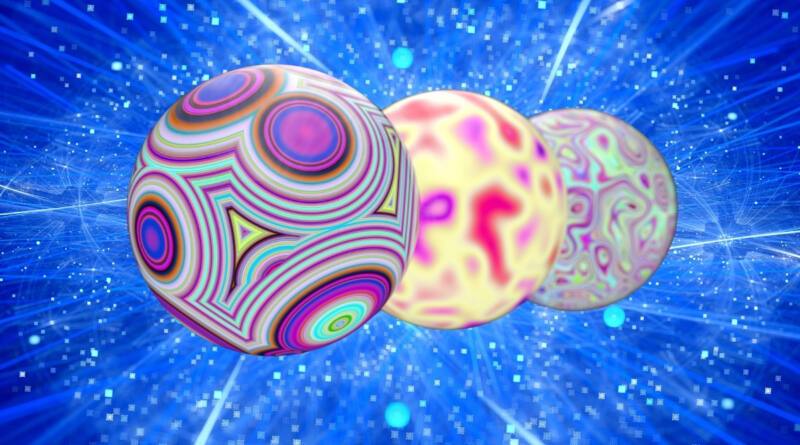New: Protons And The Wondrous Mystery Of Quarks
WFY BUREAU UK: Nuclear theorists have developed a high-resolution map of quark distributions within protons. Thanks to the use of advanced computational models, this map helps distinguish the roles of up and down quarks in proton properties.
A team of nuclear theorists from various institutions, including the U.S. Department of Energy’s Brookhaven National Laboratory, Argonne National Laboratory, Temple University, Adam Mickiewicz University of Poland, and the University of Bonn in Germany, has utilised supercomputers to forecast the spatial distributions of charges, momentum, and other characteristics of “up” and “down” quarks within protons. A recent publication in the esteemed journal Physical Review D has shed light on significant disparities in the properties of up and down quarks.
This study represents a groundbreaking achievement in the field, as it utilises a novel theoretical framework to generate a detailed and precise map of quarks within a proton. The findings reveal an intriguing asymmetry between the distribution and spatial extent of the up quark compared to the down quark. These disparities suggest that up and down quarks could potentially have varying impacts on the essential characteristics and composition of the proton, such as its internal energy and spin.
These calculations play a crucial role in analysing data from nuclear physics experiments, shedding light on the distribution of quarks and gluons within the proton and how they contribute to its overall properties.
The DOE Office of Science funds the Continuous Electron Beam Accelerator Facility (CEBAF), a user facility at the Thomas Jefferson National Accelerator Facility, which is currently conducting experiments of this nature. Future plans for the Electron-Ion Collider (EIC) at Brookhaven Lab include the implementation of higher-resolution versions. During these experiments, scientists observed that high-energy electrons release virtual particles of light, which interact with protons and alter their momentum without causing them to disintegrate. We can gain valuable insights into the quarks and gluons that make up the proton’s core by examining how these scatterings affect its momentum. It’s akin to using an x-ray imaging technique to uncover the fundamental building blocks of matter.
A Fresh Perspective On Generalised Parton Distribution (GPD)
Through scatterings, scientists can gain access to the Generalised Parton Distribution (GPD) of the proton, as partons refer to the combined group of quarks and gluons. Imagine the proton as a container filled with tiny quarks and gluons. The GPD provides insights into the distribution of energy, momentum, and other properties of these particles within the container. It’s similar to watching particles move when the container shakes. Think of it as a map that shows the probability of finding a marble with a certain energy momentum at a specific location within the bag. Understanding the distribution of these quark and gluon characteristics is critical for scientists to gain insights into the proton’s intricate mechanisms. This valuable knowledge could potentially pave the way for innovative applications.
In order to acquire a comprehensive map, the scientists at the RIKEN BNL Research Centre (RBRC) had to meticulously examine numerous scattering interactions, encompassing a wide range of momentum change values for the proton.
Shohini Bhattacharya, a physicist in Brookhaven Lab’s nuclear theory group and the RIKEN BNL Research Centre (RBRC), has developed a new formalism that provides access to the distribution of quarks and gluons within a proton. In their analysis, the group employed a method that allowed them to make predictions about the spatial distributions of charges, momentum, and various other properties of “up” and “down” quarks within protons.
The researchers recently developed a novel theoretical approach to efficiently simulate the multiple momentum changes of the proton. Physical Review D published the findings.
In the past, theorists generally believed that the proton’s change in momentum was evenly distributed between its state before and after the scattering of light. The simplification resulted in a less precise portrayal of reality, as well as increasing the computational cost of the simulations.
Bhattacharya explained that in order to obtain a detailed proton map, it was necessary to run separate simulations for each momentum change value of the proton. This significantly increased the computational burden.
In addition, she mentioned that the new approach allows for an examination of the impact of momentum transfer solely on the outgoing proton, specifically in the final state. This approach offers a viewpoint that closely mirrors the actual process.
In a groundbreaking development, the new theoretical approach allows for the modelling of multiple momentum transfer values in a single simulation, which is extremely important.
Exploring the Potential of the Lattice
Quantum chromodynamics (QCD) is the theory that lays out the calculations for quarks and their interactions. Solving these equations becomes a challenging task due to the numerous variables involved. Brookhaven Lab first developed the technique known as lattice QCD to address this challenge.
Physicists use a method where they position the quarks on a discretized 4D spacetime lattice. We can visualize this lattice as a 3D grid, with quarks at the nodes. The fourth dimension represents the dynamic changes in quark arrangements over time. Supercomputers meticulously analyse QCD equations by exhaustively exploring every possible interaction between quarks, taking into account the intricate interplay of numerous variables.
Researchers at the Argonne National Laboratory have developed a new method for modelling the interactions between photons and protons. This breakthrough allows us to use lattice QCD to simulate a greater number of momentum transfers, resulting in higher-resolution imaging that is about 10 times faster than previous methods.
The equations of QCD have distinct variables for up and down quarks, allowing scientists to obtain separate images of each quark type and calculate their individual GPDs.
Examining The Outcomes And Potential Consequences
The team not only mapped out the energy-momentum distributions of the up and down quarks, but they also examined their charge distributions within protons. The team also examined the momentum and charge distributions of quarks in polarised protons, which align the protons’ spins in a specific direction. This study aimed to understand the contribution of the inner building blocks to the proton’s spin. Proton spin plays a crucial role in magnetic resonance imaging (MRI), enabling doctors to visualise internal structures in our bodies without invasive procedures. The origin of this property, which stems from the proton’s internal components, remains a mystery.
The researchers discovered that the distribution of the momenta of the down quarks within a polarised proton is noticeably asymmetric and distorted in comparison to that of the up quarks.
These findings reveal that the distinct spatial distributions of up and down quarks within a proton contribute to the proton’s spin in different ways. Understanding the spatial distribution of momentum provides insights into the angular momentum of quarks inside the proton.
The scientists’ calculations indicate that up-and-down quarks cannot account for more than 70% of the proton’s total spin. It suggests that the gluons must also make a significant contribution. The distribution of the proton’s spin among its constituent quarks and gluons provides valuable insights into its internal structure. Scientists can gain valuable insights by understanding the forces that act within the atomic nucleus, scientists are able to gain valuable insights.
Recent experimental findings from the Relativistic Heavy Ion Collider (RHIC) at Brookhaven Lab provide support for the notion of a substantial contribution of gluons to spin. At the future EIC, we will thoroughly examine and analyze this question.
Scientists will use the new theoretical predictions to gather crucial information for comparison with the experiments and to aid in interpreting their data.
Experts emphasised the importance of combining theory and experiment to obtain a comprehensive understanding of the proton.




